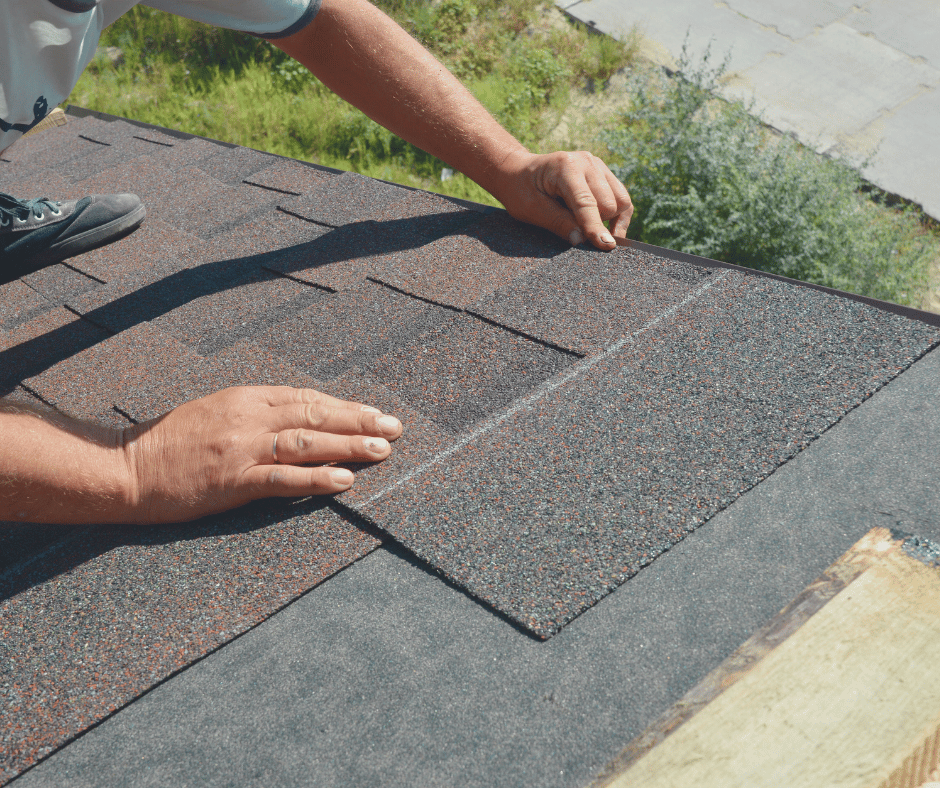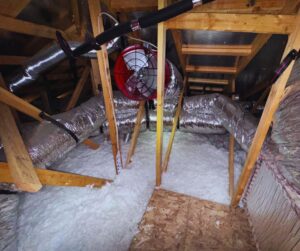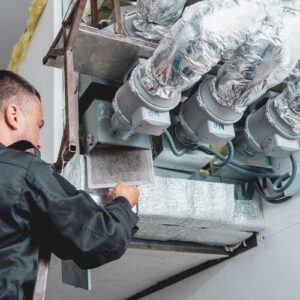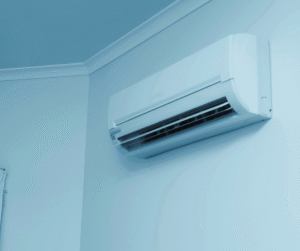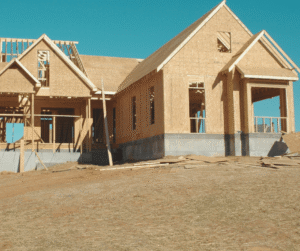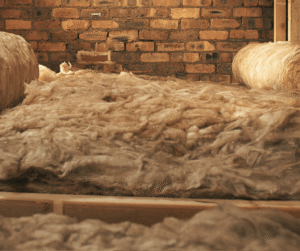When people think about insulating their home, they usually picture fiberglass batts or blown-in cellulose in the attic floor. But the roof itself is often overlooked. A roof with insulation works differently: instead of insulating just the ceiling below, the entire roof structure becomes part of the thermal envelope. This is especially important in California’s climate, where hot summers and chilly nights demand year-round energy efficiency.
@miller.attics.ca This guy had no idea what was waiting for him #attic #atticuslincoln #horor #dark
♬ Violin – Grooving Gecko
Historically, American homes were insulated mostly at the attic floor. Roofs – especially pitched roofs – were left uninsulated, making attics unbearably hot in summer and freezing cold in winter. In Europe, however, external roof insulation became common decades earlier, and eventually spread to the U.S. Today, roof & pitched roof insulation is considered one of the most effective ways to improve comfort, reduce energy bills, and extend the life of the building.
Why Roof Insulation Differs from Attic Insulation
Attic insulation separates the living area from the attic. But with roof & pitched roof insulation, the insulation follows the roof slope, creating what’s called a “warm roof.”
- Flat roofs generally rely on exterior roof insulation with rigid boards.
- Pitched roofs offer two main methods: external roof insulation above the rafters or pitched roof insulation between rafters inside the structure.
Both systems create a roof with insulation, but their performance and costs vary.
Flat Roof Insulation
Flat roofs are simple in appearance but complex when it comes to insulation. Because there’s no slope, heat easily escapes without proper protection.
- The standard solution is exterior roof insulation: rigid boards placed above the structural deck, under waterproofing membranes.
- This method protects the roof from extreme temperatures and offers continuous coverage.
- However, it requires skilled installation and proper sealing against moisture.
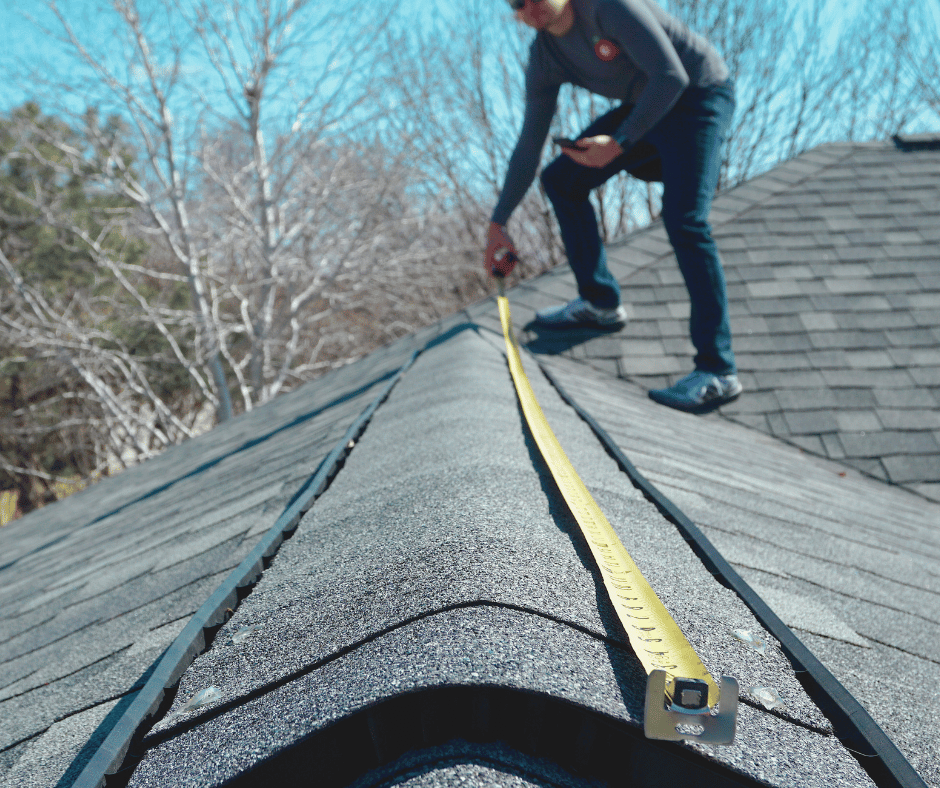
Pitched Roof Insulation Options
External Roof Insulation (Above Rafters)
Also known as “over-rafter insulation,” this involves adding rigid boards above the roof structure.
- Pros: eliminates thermal bridging, keeps rafters warm and dry, delivers the highest efficiency.
- Cons: costly, best done during a roof replacement project.
This approach defines what most experts call external roof insulation – the premium choice for new builds or major renovations.
Pitched Roof Insulation Between Rafters
This more affordable method places insulation panels or rolls directly between the wooden rafters.
- Pros: easier retrofit, less invasive, budget-friendly.
- Cons: rafters themselves conduct heat, so efficiency is slightly reduced.
Homeowners often choose pitched roof insulation between rafters when they want an immediate upgrade without removing the roof covering.
Cost Comparison
- External roof insulation: $7–$12 per sq. ft. – higher upfront investment, maximum performance.
- Between-rafters insulation: $3–$6 per sq. ft. – more affordable, suitable for retrofits.
- Flat roof systems with exterior insulation: $5–$10 per sq. ft., depending on materials and waterproofing.
Over time, any type of roof with insulation pays back in energy savings. The difference is how soon the payback comes and how much comfort improvement you notice.
Real-World Example
A family in Marin had an older roof with insulation that was little more than thin fiberglass between rafters. Summers made the upstairs unbearable, while winters brought drafts and condensation near the windows. Their energy bills kept rising.
After a full inspection, we discussed both options: external roof insulation above the rafters versus upgrading the existing pitched roof insulation between rafters. Since the roof covering was still in good condition, tearing it off for external insulation wasn’t practical. Instead, we installed dense modern boards between rafters, sealing gaps that had been left for decades.
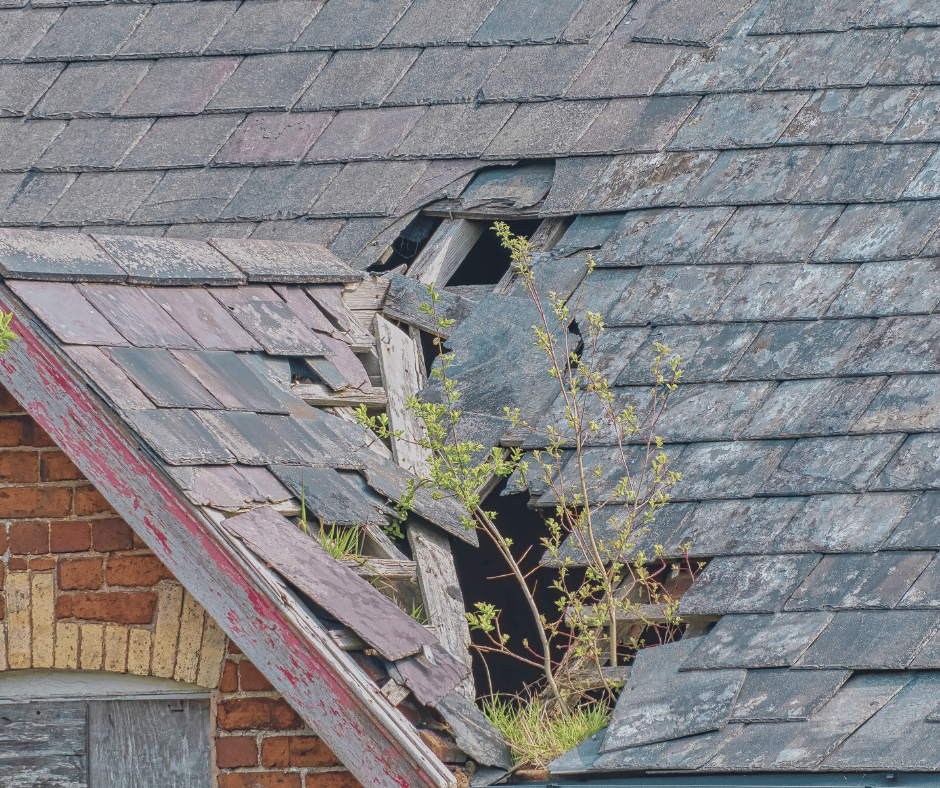
The results were clear:
- Upstairs bedrooms stayed 8–10°F cooler in summer without relying on constant air conditioning.
- Heating costs dropped nearly 20% in winter.
- The family reported less outside noise and no more “drafty” feeling upstairs.
Years later, when the roof eventually needed replacing, they opted for external roof insulation. By combining both methods over time, the home transformed from inefficient and uncomfortable to a model of energy performance.
Key Takeaways
- Flat roofs: best insulated externally with rigid boards.
- Pitched roofs: two main methods – external roof insulation (more effective, more expensive) or pitched roof insulation between rafters (cost-effective retrofit).
- Roof with insulation always performs better than a bare roof, lowering energy costs and improving comfort.
- The best choice depends on timing, budget, and whether a roof replacement is already planned.
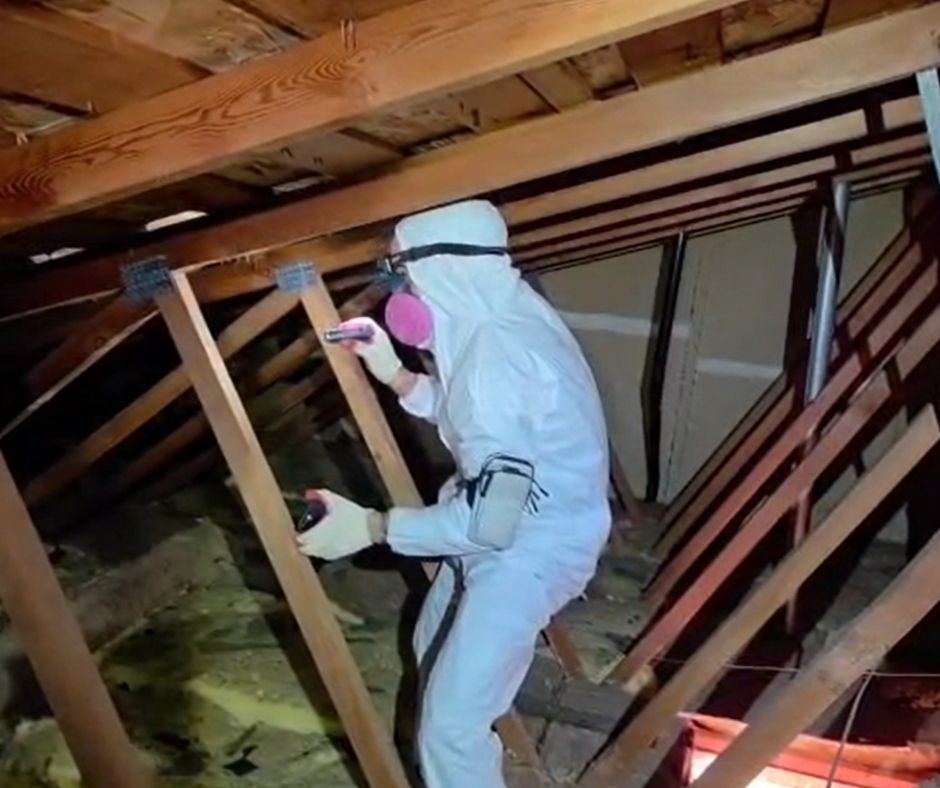
Pitched Roof Insulation Between Rafters
Installing pitched roof insulation between rafters is one of the most effective ways to create a warm, energy-efficient living space under a sloped roof. This method is especially valuable when the attic or loft area is being converted into a usable room, as it keeps the insulation layer within the structure of the roof without significantly reducing the internal ceiling height.
By carefully fitting insulation boards or mineral wool batts between the rafters, homeowners can achieve excellent thermal performance while still maintaining the architectural character of a pitched roof. When combined with additional insulation layers either above or below the rafters, this approach minimizes thermal bridging and ensures year-round comfort.
Why Choose Between-Rafter Insulation?
- Preserves Interior Space – Placing insulation directly between the rafters makes it possible to use the loft as a bedroom, office, or storage area without losing too much headroom.
- Efficient Thermal Performance – Modern insulation materials such as rigid PIR boards or mineral wool deliver strong energy efficiency, especially when paired with a continuous layer across the rafters.
- Energy Savings – Proper insulation between rafters reduces heating and cooling costs, which is especially important in climates with hot summers and cool nights, like Northern California.
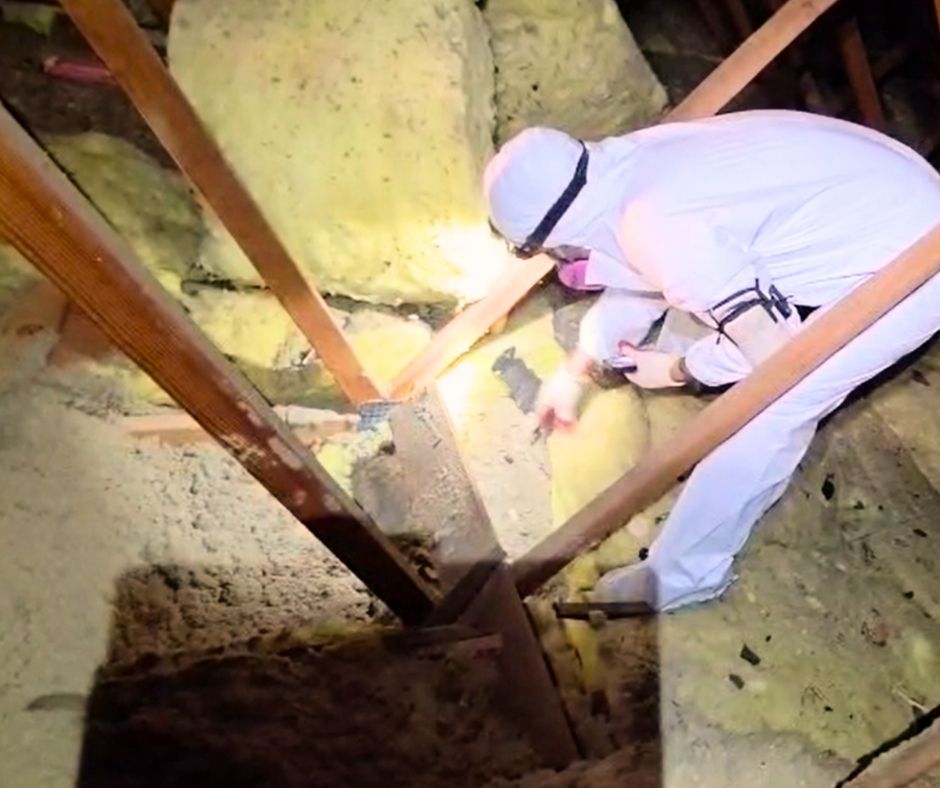
Recommended Thickness and Installation
In many homes, rafters are around 150mm deep, which limits how much insulation can fit between them. To meet modern energy standards, installers often use a layer of 100mm insulation between rafters plus an additional 50mm layer beneath or above. This combination helps achieve U-values of around 0.18 W/m²K in retrofits and as low as 0.11 W/m²K in new builds.
It’s also crucial to leave a ventilation gap (usually around 50mm) above the insulation in ventilated roofs. In unventilated designs, counter-battens and breathable membranes are used to prevent condensation and mold growth.
Frequently Asked Questions
Do I also need insulation above or below the rafters?
Yes, in most cases. While pitched roof insulation between rafters is effective, adding an extra continuous layer above or below the rafters eliminates cold bridges where heat could escape through the timber. This layered approach creates a warmer and more efficient “envelope” for the house.
How thick should the insulation be?
The exact thickness depends on building codes and rafter depth, but most projects require at least 150mm of insulation in total. This is often split between the rafters and a continuous layer to ensure compliance with modern energy performance standards.
Will this reduce ceiling height in my loft?
A small amount, yes. Adding insulation under the rafters will lower the ceiling slightly, but the trade-off is much better thermal performance. For loft conversions, this is usually a worthwhile compromise.
How does ventilation work with between-rafter insulation?
Adequate airflow is essential to prevent condensation. This can be achieved by leaving a ventilation gap between the insulation and the roof covering, or by using modern breathable membranes that allow moisture to escape without letting cold air in.
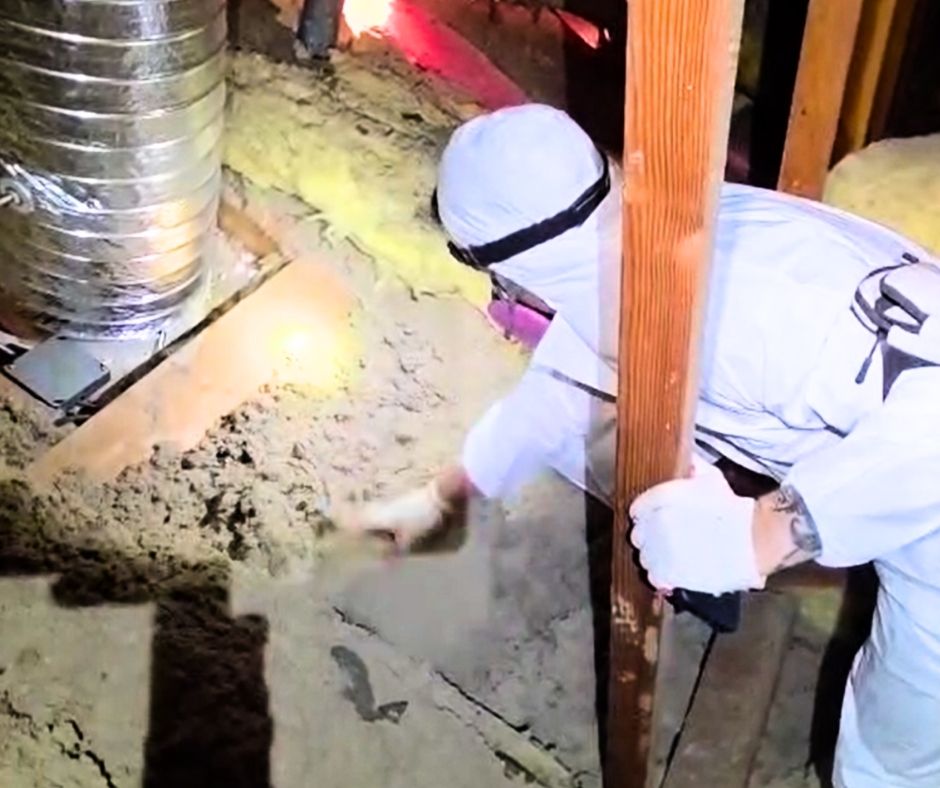
Key Advantages of Between-Rafter Insulation
| Advantage | Explanation |
|---|---|
| Maximizes interior space | Maintains usable loft height, ideal for conversions. |
| Strong energy efficiency | Reduces heat loss and lowers energy bills. |
| Flexible for renovations | Can be applied in existing roofs without full reconstruction. |
| Reduces thermal bridging | Works well when combined with an additional insulation layer. |
| Moisture protection | With proper ventilation, helps avoid condensation and mold issues. |

